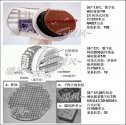antiterror13
Brigadier
That is what these ignorant western analysts do not understand, the Chinese army does not need a EUV machine, they are quite independent in the manufacturing of integrated circuits, I have heard that CETC can manufacture up to 65 nm although in low volume. The chips used by the military do not need to be manufactured in the last nodes because reliability is the ultimate goal. The worst of the case is that they ignore two technological advances that China is seriously investing and that can give it a considerable military advantage. One is wide field Advanced packaging, like 3d stacking, heterogeneous integration. which would allow them to create new IC architectures with controllable physical characteristics without having to make a large investment. And the other area is new materials like silicon carbide and galium nitride. Integrated circuits made of silicon carbide can literally survive hell. None of that requires EUV or even Immersion.
In the end the only thing they got is to united Chinese companies in an effort to create an independent semiconductor industry and without significantly hurting the electronic capabilities of the Chinese army. Is blowback after blowback.
Great, thankyou
So CETC fabs use 100% Chinese equipment and software?
My other question is what lithography node is used for Chinese latest AESA which I am assuming all manufactured 100% Chinese?

